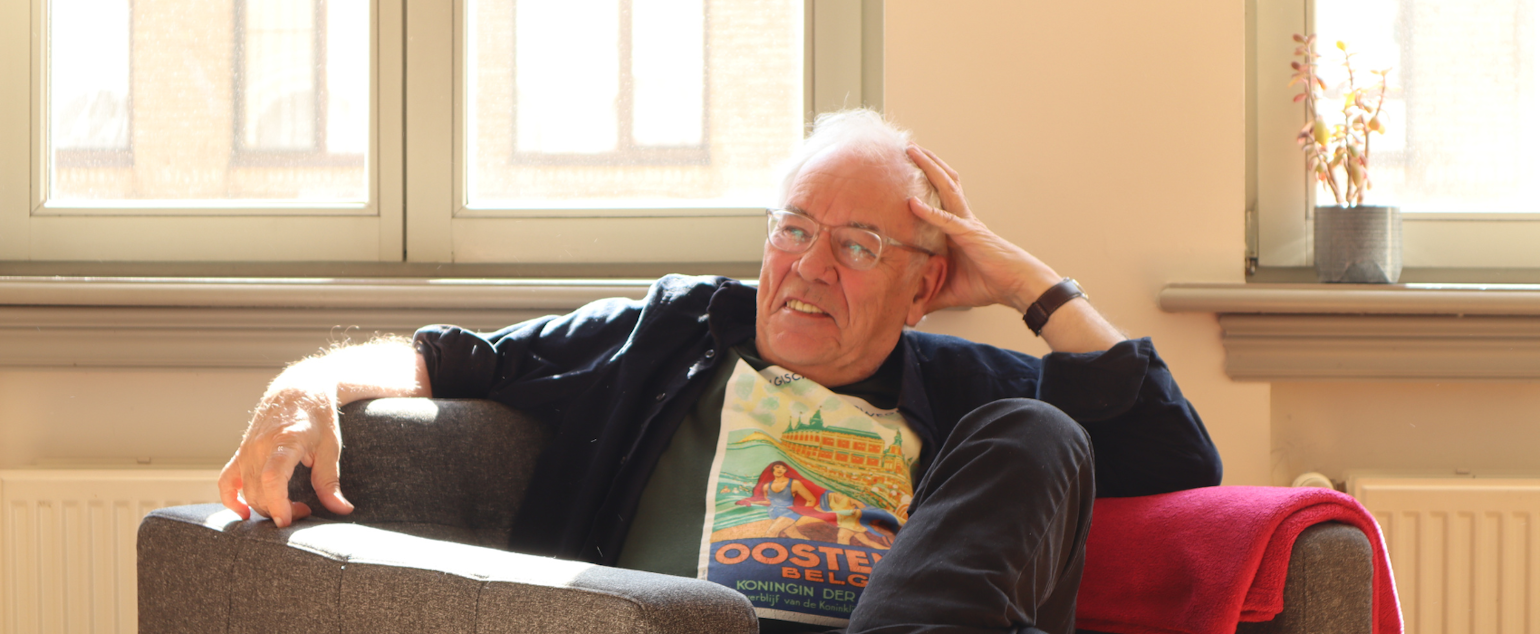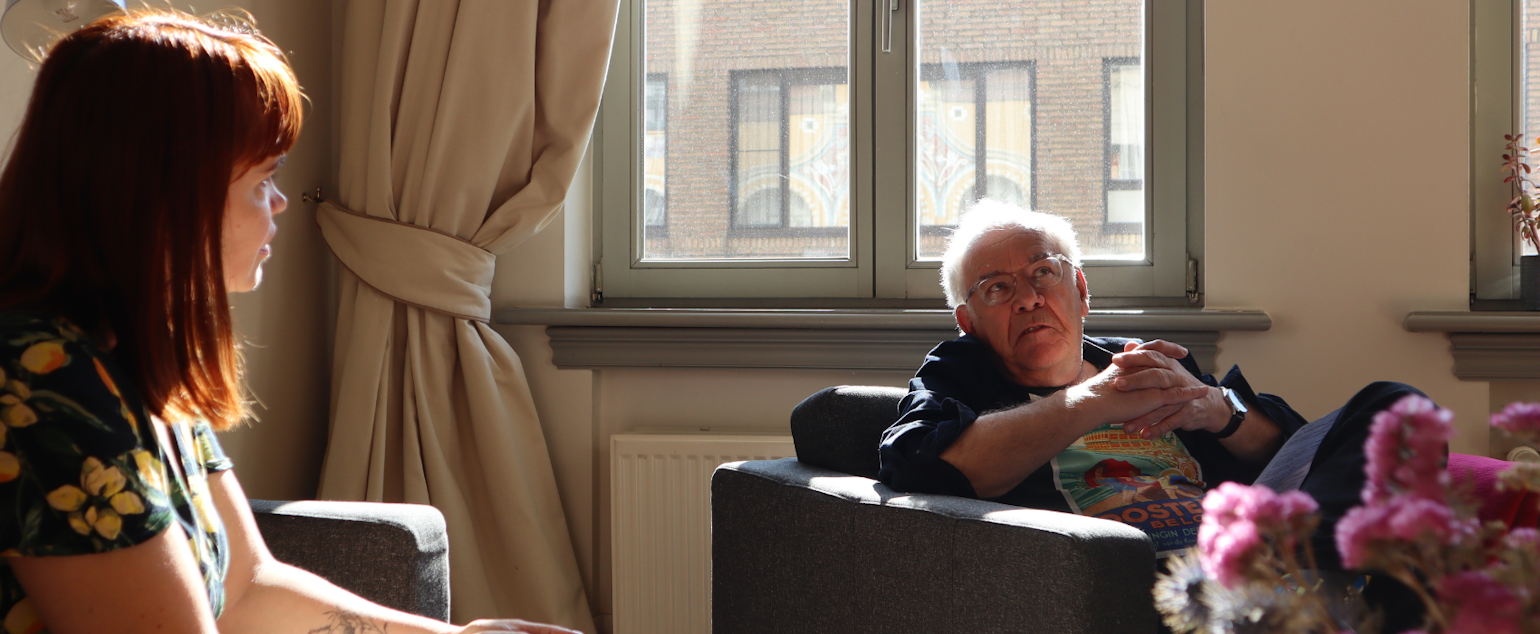Per Holmer: a portrait of a passionate translator
To say that Flanders is something of a second home to Per Holmer would be an understatement. The translator Dutch-Swedish has recently stayed at the Translators’ House in Antwerp for the twelfth time, and he has also worked at its previous locations (in Leuven and Antwerp). Over the years, he has built an impressive track record as a translator, having translated no fewer than sixteen titles by Hugo Claus and works by several contemporary authors. He hopes that Flanders and the Netherlands’ Guest of Honour programme at the Gothenburg Book Fair in 2027 will finally put Tom Lanoye’s work on the map in Sweden.

How did you first discover Flemish literature?
“I was in my early twenties when I read the Swedish translation of Chapel Road by Louis Paul Boon. I was instantly impressed and wanted to read more of his work. Had Boon been Portuguese, I might have ended up translating from Portuguese. But he wrote in Dutch, so I bought a ‘Teach Yourself Dutch’ book and a Dutch-Swedish dictionary. Apart from one semester at university, I taught myself Dutch and Flemish entirely on my own.
In 1979, I travelled to Belgium for the first time. I was eager to meet Louis Paul Boon and perhaps translate some of his work, but I learned that he had passed away just a few months earlier. It was a huge disappointment: the king was dead. So, I asked myself: who is the crown prince? And everyone said ‘Hugo Claus.’ That’s how I started translating Claus’ work, and I even got to know him personally.”
Had Louis Paul Boon been Portuguese, I might have ended up translating from Portuguese.Per Holmer
What is the added value of staying at the Translators’ House?
“Staying here provides a quiet place to work, free from the appointments and obligations that come with being at home. But it’s also the perfect opportunity to immerse myself in spoken Flemish. I believe it’s important not only to master Dutch and Flemish on paper but also to be able to speak and understand it well. To that end, I visit cafés, strike up conversations with people on the street, and so on.
The first time I stayed here, I was translating Will-o’-the-Wisp by Willem Elsschot. That was an instant success for me. If there was an address mentioned in the book, I could walk there. I could truly immerse myself in the neighbourhood he described. The same happened when I was working on Elias or the Struggle With the Nightingales by Maurice Gilliams. I found myself in the writer’s very habitat.”

Has the Translators’ House also given you the chance to engage with contemporary authors whose work you translate?
“Absolutely. I’ve had regular contact with poet Tom Van de Voorde, for example. It’s helpful to be able to meet him when I’m in Antwerp. We discuss his poems in detail, which is incredibly valuable because poetry is such a challenging genre to translate. You want to fully grasp what the author means and the associations they make, and carry that into the translation. At the same time, it shouldn’t become a literal or academic translation, because then it’s no longer poetry. In other words, the translated poem must remain faithful to the original without compromising the flow of the translation – a delicate balance.”
You can look back on a long and rich career. Are there projects you’re particularly proud of?
“I’ve translated sixteen titles by Hugo Claus; no other translator can say that (laughs). All his major works have been translated into Swedish, and I’m proud of that. Claus trusted me, I think. For instance, in Wonder, the first book of his that I translated, I noticed something odd. It was a small detail; I can’t remember exactly what. But I brought it to his attention, and he said that even after twenty reprints, no one had ever spotted or mentioned the mistake. By noticing it, I earned his trust. Early in my career, I also wrote a few novels myself, so I knew Claus not only as a translator but also, in a way, as a fellow writer.”

In 2027, Flanders and the Netherlands will be the guest of honour at the Gothenburg Book Fair. What do you see as the main challenges in promoting Flemish literature in Sweden?
“In Sweden, Flemish literature struggles more than in other Scandinavian countries like Denmark or Norway. I’m not sure why, but it’s a trend I’ve observed. Swedish publishers often show little curiosity when I propose a project, though smaller publishers tend to be more receptive. There’s also a noticeable difference in how books are received across Scandinavian countries. My Swedish translation of Herman Koch’s The Dinner, for example, was completely misunderstood in Sweden, while the Finnish and Norwegian translations did very well. It’s hard to predict or explain such things.”
At the moment, it’s astonishing that not a single book by Lanoye has been translated into Swedish. I’d love to change that.Per Holmer
Which Flemish titles or authors do you still love to translate?
“Tom Lanoye’s Speechless absolutely needs to be translated into Swedish, as does The Turntable, and much more of his work as well. His storytelling is truly exceptional, and Speechless moves me even more because it’s such a touching portrait of his mother. At the moment, it’s astonishing that not a single book by Lanoye has been translated into Swedish. I’d love to change that.”